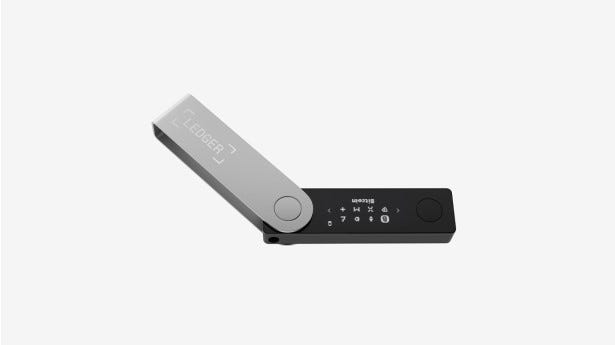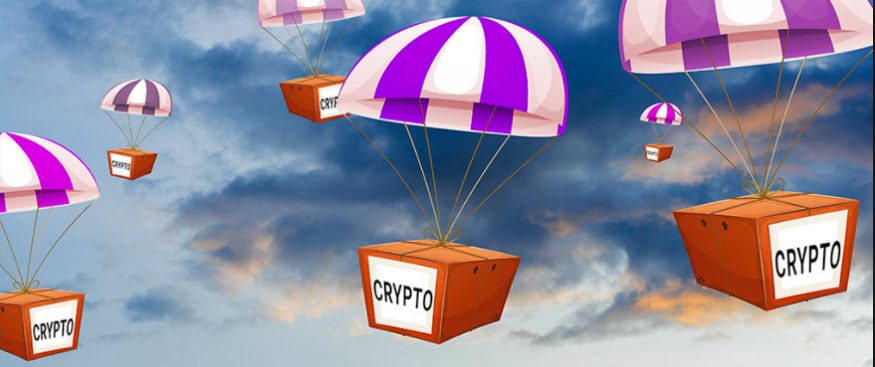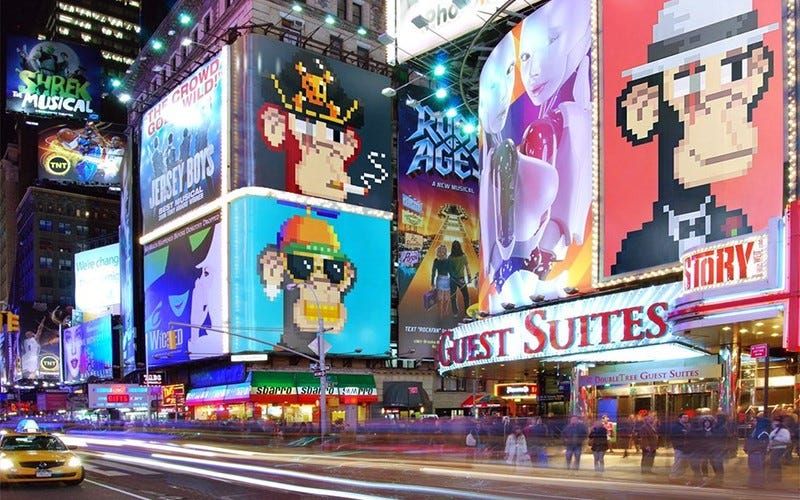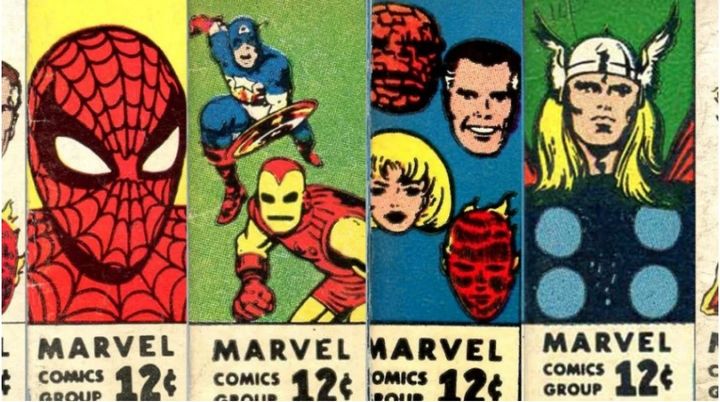To start with, I am a huge fan of NFTs and have been investing in them since August 2021. Although it’s been less than a year, it feels like an eternity. I still remember the week I got hooked. It was the final week of my summer internship, and I started exploring after hearing about Zed Run and the opportunity to manage my own digital racing stable — it sounded awesome. On the plane ride across country back to school, I started digging into OpenSea, NFT Twitter, and other projects out there. When I stepped off the plane my head was spinning. The scene was absolutely captivating with so much opportunity and money flying around. Subcultures were forming and the pace of development and number of new projects launching daily was insane. For the next few weeks the space was pretty much all I could focus on, learning as much as I could. For those who got into NFTs around when I did, I would not be surprised if the experience was the same.

Since then, I’ve invested in numerous projects and have kept a close eye on the sector as a whole. I have traded in and out of positions, but some of the more successful projects that I entered (some I still hold) include Mutant Ape Yacht Club, World of Women, Rumble Kong League, Lazy Lions, Sappy Seals, Pudgy Penguins, NFT Worlds, Treeverse, and Worldwide Webb. Projects that I invested in that have either failed or gained little traction include Shabu Town Shibas and the Crypto Gem Alliance, among others. I was also rugged thanks to Two-Faced Punks — honestly, what was I thinking?

No, I am not rich from trading NFTs. I sold most of the big winners listed above well before they reached their respective peaks, and I held many losers much longer than I should have. However, these mistakes are all a part of the game and learning experience.
In this piece, I hope to impart some of the knowledge I’ve gained as well as some trading tips that might be helpful for those still navigating the NFT space. This information is not intended to be financial advice and by no means guarantees success. Don’t be fooled — there is a large amount of survivorship bias in the space, and I would venture that most people that have purchased or traded NFTs have lost money. As a result, the old adage that you should never invest money that you cannot afford to lose rings particularly true here.
Additionally, if you have never purchased an NFT, there are better introductory guides out there — here is a good one by @Loopifyyy. The tips in this article are targeted more for the average trader in the space looking for that extra edge or bit of helpful info that might have escaped their grasp to date. That being said, I have tried to add enough context for beginners to follow along as well.
Security and Scams
In my opinion, for the average trader the biggest risk when investing in NFTs is not necessarily the volatility or inherent worth of these assets, but rather of getting hacked and losing everything. Here more than any other asset class, this risk is very real and there are people out there every day trying to scam you. Protecting against this downside is of the utmost importance, so I’ll start with tips concerning security and scams.
Hardware Wallets
Although it should not need to be said, buy and use a Ledger or other hardware wallet. Doing so will not protect you from every hack or phishing attempt, but it will protect you from a lot and give some peace of mind.
It is also ideal to start your NFT collection with a hardware wallet, as opposed to transferring your NFTs there later on. The gas is surprisingly expensive for these transfers and if you have a lot of NFTs, it will add up.

Burner Wallets
Use a burner wallet for minting NFTs. This means creating a separate / temporary wallet from your main wallet just for minting. You may have done your research on a project, but there is always a chance the project is a rug or that there is something suspicious in the minting contract, and it’s not worth putting your other assets at risk.
Beware of Malicious Transactions
Even if you own a Ledger, always exercise caution when signing transactions as you can still be hacked. For example, say you’re feeling lucky in the midst of the free mint craze and think you’ve found the next goblintown.wtf. You need to mint from the project’s website, which requires you to sign a transaction that is called “setApprovalForAll” (see below image). To be clear, there is almost no scenario in which an approval should be needed for a mint. However, if the project is a scam and you grant approval here, there is a chance you just lost your most expensive NFTs. This function grants a third party the ability to transfer all of the NFTs you own for a given collection. Bad actors are always trying to find the most expensive NFTs you own and trick you into granting approval for that collection, which you may have just done (all the more reason to use a burner wallet). Therefore, always double check what you are signing and try to only interact with reputable parties, even if you are using a Ledger. For more information, see here for a thread on the “approve()” and “setApprovalForAll()” functions, and here for a more general thread on identifying suspicious mint contracts. Both threads are courtesy of @cygaar_dev.

Air Drops
Working off of the above, token air drops are great, but never claim them without making sure the contracts are safe. If you are like me and are unable to make that determination on your own, there are others out there that can help. Personally, I rely on information provided by Twitter accounts such as @0xQuit before making a decision to claim. See here for an example of a contract breakdown that @0xQuit provided on $SOS.

If you trade NFTs, odds are that you will be eligible to claim future air drops as a result of your activity on either OpenSea or Metamask, which is why I’ve included this section.
Revoking Approvals and Disconnecting From Applications
If you accidentally gave an approval you shouldn’t have, you can still use revoke.cash to manually clear malicious approvals. However, if you were truly scammed, the odds are that you will not be able to clear before your assets are stolen. I remember the first time I used revoke.cash — I was surprised to see that we give approvals to OpenSea when we list NFTs for sale on the platform, and to DEXs like Uniswap when we use them for swaps. Approvals to reputable marketplaces and DEXs like these should be safe. However, you can clear any of these other approvals with revoke.cash as well if you want complete peace of mind as to who has access to your NFTs and other crypto assets. Clearing approvals will cost a little gas.

I also always like to manually disconnect my Metamask from any website that I connect it to just in case the website ends up being malicious or hacked. To do this: click on the 3 dots in the upper right corner of Metamask -> click on Connected Sites -> click Disconnect for any applications you wish to disconnect from.
Scam Projects / Rugs
Although I have never been hacked, I was rugged by a project after mint and was lucky to not have been. How did this happen? As noted earlier, the project was called Two-Faced Punks. In retrospect, flags were everywhere and it was only greed and wild speculation that led me to mint the project, which was a stupid idea to begin with and had hideous art. Warning signs — crude / derivative art, spelling and grammar mistakes on OpenSea (“And punks not show their true colour…”), deleted Discord messages, etc.
I think what got me was this fake Twitter account going by the name of Beluga Whale (the account has since been deleted). From what I remember, the account had around 100,000 followers and seemed semi-legit tweeting about past successes. In reality, this account had purchased all of its followers, and it was run by the same people bouncing around from scam to scam. They would quickly create a project, build up hype and momentum with these fake Twitter accounts, rug, delete everything, and then start again with a new scam. Rinse and repeat. Scams have only gotten more sophisticated since then, so always have your antennae up.
Also, do not participate in stealth mints. These are almost always scams and the risk is not worth it. You will typically see stealth mint scams occur in Discord after reputable projects are hacked, so even if you see one offered in a project’s Discord, do not participate.

Trading Tips and Strategies
Now on to some tips and strategies for trading. Note these are short to medium-term “trading” tips, and not long-term “investing” tips. The latter requires an evaluation of the unique staying power of a project, which depends on a project’s art, community, founders, marketing, utility, lore / storyline, and more. This is a different subject matter and one that I will not touch on here.
The tips and strategies listed here are also not all-encompassing. These are just some of the notable ones that I’ve come across from experience over the past year, and I hope that you will find one nugget that serves you well in the future. Again, nothing here should be construed as financial or investment advice and is my opinion only.
Twitter is a Must
This is a given and shouldn’t have to be said, but you need to have a Twitter to stay current on NFTs and new projects. For projects you are interested in, join their Discord and engage with those communities some more.
Also, don’t be stingy on following people — you don’t want your Twitter account to be an echo chamber. Follow people who own BAYC, Cool Cats, Doodles, Moonbirds, CloneX, and other prominent projects. Having more diverse views enter your feed only increases the odds of success in this space. Owners of blue chips are by no means smarter than anyone else, but these communities are strong, and I have found them to be surprisingly early on some recent projects that have found success like goblintown.wtf and Moonrunners. Whether it’s because owners of these projects wield more ETH and can start momentum on their own, or something else, I’m not sure but if I see numerous prominent BAYC holders starting to buy something I’ll generally have a look at that project. Maybe others think the same way and it’s all one big cycle.

Another important benefit of being on Twitter is that it keeps you apprised of air drops and/or other benefits that you might be eligible for. For example, this is where I learned about the $SOS, $LOOKS, and $OP claims, among other things.
Volume is Key for Short-Term Trading
Particularly for new or more speculative projects (i.e., not the BAYCs of the world), make sure to check how often a project’s NFTs are sold. You can find this information in the “Activity” section of a project’s landing page on OpenSea, which provides current and historical data on the number of sales that have occurred for a project.
For example, one of Treeverse’s projects is called NFTrees, which will serve a role in Treeverse’s upcoming MMORPG. If you check the Activity section for the project, you will notice that although the NFT commands value (as of writing the floor is 12.99 ETH), it is not very liquid. Only three sales have occurred in the last 13 days. Therefore, even if you have high conviction on the project, if you are a short-term trader, it would not be wise to purchase this NFT in bulk. If you do and in a week’s time you want to exit the position in full, you would most likely have to sell well under the existing floor price to get out since there are not enough buyers in the market. However, if you view the project as a long-term hold, then it is a different story entirely since conditions and liquidity may change in the future.

Selling into Pumps
As a market, NFTs have often traded in cycles as a group. The two biggest spikes occurred in August 2021 and January 2022 (see below graphic). The in-between has generally seen flat or declining volume and prices, with individual projects either over or underperforming based on fundamentals. I am overgeneralizing here, but it is to set the general stage.

When a project is pumping and prices are increasing rapidly, in retrospect I would have almost always been better off selling into that volume. It is so easy to get caught up in the moment and think prices will reach astronomical heights, particularly when you know some projects like BAYC actually have. However, for the vast majority of projects, prices usually come back down over the short-to-medium term. I made this mistake twice with Lazy Lions, which saw very heavy volume near the end of September in 2021 and again before they released their new roadmap in late January 2022. In both instances, the project experienced above-average volume over the span of about 2 weeks, and it would have been a smart decision to have traded into that volume. You will rarely time the top when selling in these instances, but let me know the last time you have.

However, every situation is different, and no rule should be followed blindly. If you are invested in a project and you think there are fundamental reasons to keep holding through large spikes in volume, then nothing should dissuade you from doing so.
Post-Reveal Dumps
Although not always the case (see Moonbirds), when I see crazy volume at high prices for a project pre-reveal, I tend to avoid it. A lot of these projects are built on manufactured hype (e.g., purchased Twitter followers or influencers), which creates a storm of speculation among traders that is bound to implode. At mint, few projects even have more than a rough outline of what they want to do with their project. It is nearly impossible to sustain hype over a long period of time, so post-reveal dumps are not uncommon in these instances. See below for the price action of the much-hyped Mekaverse, which is a textbook example. Pre-reveal this project had thousands of sales going for 8 ETH+. After reveal, investors soon became discouraged with the appearance of the NFT and the project’s vision, which resulted in a dump that has persisted to this day. See Invisible Friends and Pixelmon for additional examples, among others.

I’ve encountered many traders that consistently sell pre-reveal no matter the project. The odds of revealing a one-of-one or super rare NFT are extremely low, and people who were holding out for the chance at receiving one of these rare NFTs tend to dump shortly after reveal if they did not get one. As a result, there is usually a shakeout immediately post-reveal. However, selling pre-reveal can be a risky strategy since good projects can bounce back quickly. For the average project, I’m personally not married to any one strategy here and I do what feels right for that project in the moment.

Additional Trading Tools
For the analytical minds, there are numerous resources out there that track both industry-wide and project-specific volume for NFTs that can be useful. I like Dune in particular. @NFT_GOD provides a great thread on some of the most useful dashboards to track, including one for trending projects. Here, you can see which projects have the most sales (in number or ETH) over pretty much any time frame — four hours, eight hours, one day, one week, etc. This data is useful not only for running down which projects are most liquid (which, as noted previously, is important for short-term traders), but also for getting ahead of the masses in trending projects.
For example, if you track one and two-day sales figures on a daily basis, odds are that you will come across a majorly successful project very early. Whether you decide to invest in that particular project over various other duds is a different question and depends on your ability to evaluate the fundamentals of a project.
A quick search online will provide you with various other tools besides Dune to track NFT data. See here for one such list.
Find the Trading Strategy That Works for You
As with anything, there is no single recipe for success. You need to experiment and find the NFT trading strategy that works for you, which requires learning by doing. Ideally, you are able to learn by investing with small amounts first before putting a significant amount of capital on the line.
What strategies have worked for others in the past? Well, if you had just bought and held BAYC from mint in April 2021, the return was astronomical. The project minted for 0.08 ETH (~$200 at the time), and the floor price as of writing is more or less 100 ETH. These returns also do not account for the $APE token air drop or companion NFTs (Bored Ape Kennel Club, Mutant Ape Yacht Club, and Otherdeed for Otherside) that BAYC holders had access to after mint. It’s insane, but we all know this. The point is that if you find a project and have conviction in its fundamentals and staying power, you can do very well by just holding long term.

There are also the swing traders. Here is an awesome thread by @CirrusNFT which outlines the short-term trading strategy that ended up working incredibly well for him. Find your niche.
Survive
The NFT market is extremely volatile. Returns can be great, but losses can also be brutal. We’re talking 90% or more drops — not only can an NFT’s value tank, but the value of ETH (or other crypto) in which it is denominated can also decline, which only compounds things. As a result, never feel bad taking profits or cutting losses. You need to expect wild price swings going in, but if you think it is time to move on from a project, just do it and prepare for the next battle. Survival is key.
The NFT Landscape is Evolving
NFTs are here to stay. However, it is likely that in only a few years’ time, the NFT trading landscape will look completely different than how it does today. Let’s not forget, NFTs are “non-fungible tokens,” which are unique, transferrable crypto assets made possible by blockchain technology. We have barely scratched the surface regarding use cases for this nascent technology, and the end game will surely not be us trading cute animal JPEGs with each other. As metaverses, blockchain gaming, and other use cases continue to be built out, it is likely that we will start viewing NFTs less like a separate niche and more as just a part of virtual worlds, games, and broader society. In the meantime, it’s a fun and potentially lucrative space to be in, filled with personalities and communities that are having a real-world impact on people’s lives. NFT NYC only further proved that sentiment. The space is evolving rapidly and I’ll be here for it.





Comments ()